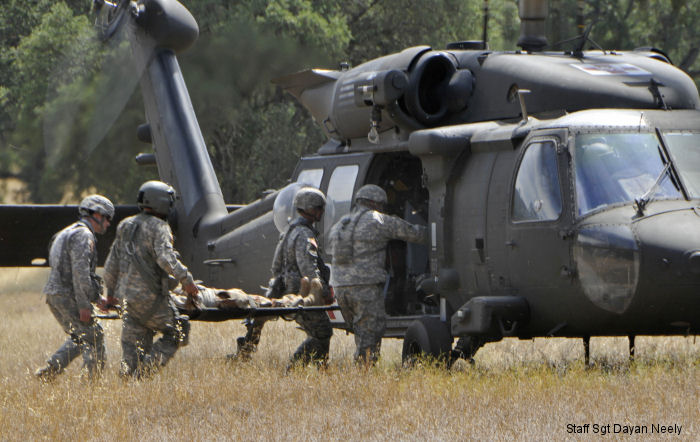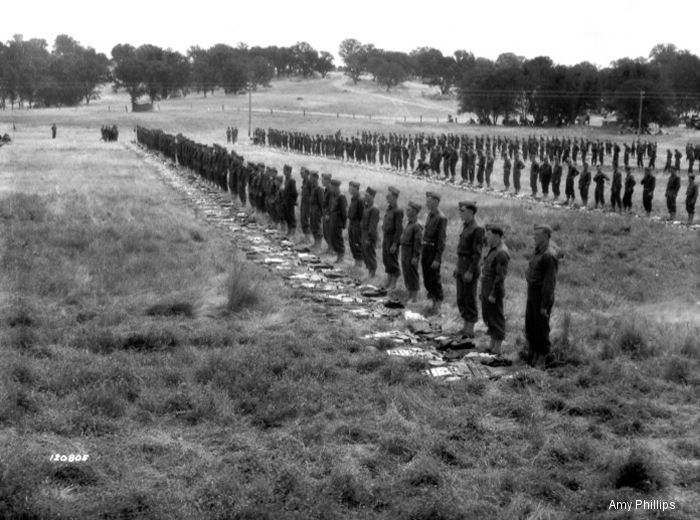US Army, January 12, 2016 - FORT HUNTER LIGGETT, Calif. by Amy Phillips – Fort Hunter Liggett celebrates its 75th year in supporting troops with more than 164,000 acres of diverse and unencroached training space since the 1940s.
A series of events will be held throughout the year to commemorate the history of the installation and military achievements both past and present. Victoria Kastner from the Hearst Monument will be the guest speaker for the first event on Feb. 24th to highlight the Hearst Era of FHL.
In 1940, the War Department purchased 266,950 acres of land from William Randolph Hearst and private land owners in preparation for WWII. In 1941, it was designated the Hunter Liggett Military Reservation (HLMR) after Lieutenant General Hunter Liggett, a decorated WWI veteran.
HLMR’s diverse landscape of mountains, valleys, rivers, plains, and forests provided deploying WWII troops with terrain much like they would find in Europe. This made HLMR ideal for training. During the sixties and seventies, Reserve Component and Regular Army Soldiers used HLMR to prepare for the Vietnam War.
In 1975, HLMR was re-designated the Fort Hunter Liggett Military Installation and became the training grounds for the 7th Infantry Division, the Combat Development and Experimentation Center (CDEC) and Reserve Component. More than 2,000 military and civilians worked on post during this peak period.
Some of the CDEC equipment tested at FHL included the Boeing Chinook CH-47 helicopter, the M16A1 rifle, the Cobra Attack Helicopter, the HELLFIRE air to ground missile system, and the Bradley Infantry Fighting Vehicle.
In 1993, ownership transferred from the Active Army to the U.S. Army Reserve as part of the Base Realignment and Closure Act. Since 2005, FHL has been managed by the U.S Army’s Installation Management Command (IMCOM) and funded by the Army Reserve in order to support year-round, total force training. Today it serves as a readiness enabler for all U.S. military services and allied forces. FHL also supports training for Federal, State and local civilian agencies.
FHL is the largest Army Reserve installation and the Army’s seventh largest. FHL is exceptionally well suited for large-scale joint exercises such as the eXportable Combat Training Capability (xCTC), Warrior Exercise (WAREX), Combat Support Training Exercise (CSTX) and Realistic Urban Training (RUT). These exercises are critical readiness enablers by providing the opportunity for troops to refine individual skills while building unit cohesiveness and integrating operations with brigade-level elements.
FHL remains a relevant total force training center with its arid terrain and temperature, similar to areas where troops are deployed. Its remote location and austere environment, enhanced with state-of-the-art support facilities are ideal for premiere world class training.
A series of events will be held throughout the year to commemorate the history of the installation and military achievements both past and present. Victoria Kastner from the Hearst Monument will be the guest speaker for the first event on Feb. 24th to highlight the Hearst Era of FHL.
In 1940, the War Department purchased 266,950 acres of land from William Randolph Hearst and private land owners in preparation for WWII. In 1941, it was designated the Hunter Liggett Military Reservation (HLMR) after Lieutenant General Hunter Liggett, a decorated WWI veteran.
HLMR’s diverse landscape of mountains, valleys, rivers, plains, and forests provided deploying WWII troops with terrain much like they would find in Europe. This made HLMR ideal for training. During the sixties and seventies, Reserve Component and Regular Army Soldiers used HLMR to prepare for the Vietnam War.
In 1975, HLMR was re-designated the Fort Hunter Liggett Military Installation and became the training grounds for the 7th Infantry Division, the Combat Development and Experimentation Center (CDEC) and Reserve Component. More than 2,000 military and civilians worked on post during this peak period.
Some of the CDEC equipment tested at FHL included the Boeing Chinook CH-47 helicopter, the M16A1 rifle, the Cobra Attack Helicopter, the HELLFIRE air to ground missile system, and the Bradley Infantry Fighting Vehicle.
In 1993, ownership transferred from the Active Army to the U.S. Army Reserve as part of the Base Realignment and Closure Act. Since 2005, FHL has been managed by the U.S Army’s Installation Management Command (IMCOM) and funded by the Army Reserve in order to support year-round, total force training. Today it serves as a readiness enabler for all U.S. military services and allied forces. FHL also supports training for Federal, State and local civilian agencies.
FHL is the largest Army Reserve installation and the Army’s seventh largest. FHL is exceptionally well suited for large-scale joint exercises such as the eXportable Combat Training Capability (xCTC), Warrior Exercise (WAREX), Combat Support Training Exercise (CSTX) and Realistic Urban Training (RUT). These exercises are critical readiness enablers by providing the opportunity for troops to refine individual skills while building unit cohesiveness and integrating operations with brigade-level elements.
FHL remains a relevant total force training center with its arid terrain and temperature, similar to areas where troops are deployed. Its remote location and austere environment, enhanced with state-of-the-art support facilities are ideal for premiere world class training.
See also |






